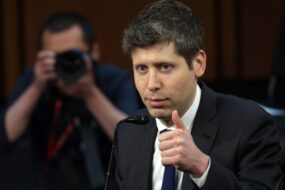
AI Safety Debate Ignites Tensions in Silicon Valley
A recent wave of controversy has swept through Silicon Valley, highlighting the escalating tensions between tech leaders and AI safety advocates. Figures like David Sacks, White House AI and Crypto Czar, and Jason Kwon, OpenAI’s chief strategy officer, have sparked debates by questioning the motives of groups promoting AI safety. These leaders suggest that some advocates might be driven by self-interest or influenced by powerful figures behind the scenes. Their comments have resonated widely, prompting many AI safety proponents to speak out, often under the condition of anonymity, fearing potential repercussions.
A History of Intimidation Tactics
This is not the first time Silicon Valley has seen such tensions. In 2024, venture capital firms circulated rumors about California’s AI safety bill, SB 1047, claiming it could lead to jail time for startup founders. Although the Brookings Institution debunked these claims as misrepresentations, Governor Gavin Newsom ultimately vetoed the bill. This incident underscores a broader pattern: the tech industry’s resistance to regulation, often through intimidation or misinformation.
Recent Allegations and Reactions
David Sacks recently accused Anthropic, an AI company vocal about the risks of AI, of fearmongering to push regulations that would benefit itself while stifling smaller competitors. Anthropic had endorsed California’s Senate Bill 53 (SB 53), which now mandates safety reporting for large AI companies. Sacks’ comments on social media dismiss Anthropic’s concerns as a strategic ploy, suggesting the company is manipulating the regulatory landscape.
Meanwhile, Jason Kwon of OpenAI addressed the company’s subpoenas to AI safety nonprofits, including Encode, which supported Elon Musk’s lawsuit against OpenAI. Kwon justified the subpoenas as necessary to uncover potential coordination between critics and OpenAI’s adversaries, such as Musk and Mark Zuckerberg. This move has drawn criticism, with many viewing it as an attempt to silence dissent and intimidate advocacy groups.
Internal Conflicts andExternal Pressures
Within OpenAI, there appears to be a divide between its government affairs team and research organization. While researchers openly discuss AI risks, the policy unit has lobbied against state-level regulations like SB 53, advocating for federal oversight instead. Joshua Achiam, OpenAI’s head of mission alignment, expressed concern over the subpoenas, suggesting they may harm the company’s reputation.
Brendan Steinhauser, CEO of the Alliance for Secure AI, counters that OpenAI’s actions reflect a belief that critics are part of a Musk-led conspiracy. He emphasizes that the AI safety community’s critiques are genuine, often focusing on inadequate safety practices at companies like xAI.
Public Perception and the Path Ahead
A recent Pew study reveals that half of Americans are more concerned than excited about AI, with primary worries including job losses and deepfakes rather than existential risks. This mismatch between public concerns and the AI safety movement’s focus on catastrophic risks complicates the regulatory landscape.
As 2026 approaches, the AI safety movement gains momentum, challenging Silicon Valley’s mantra of rapid innovation. The industry’s pushback against regulation, while understandable given the economic stakes, may indicate that safety advocates are making an impact. Balancing innovation with responsibility will likely remain a central debate in the tech world.







No Comments